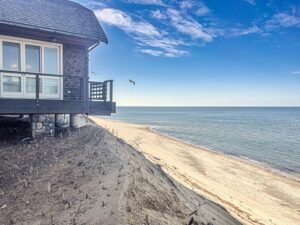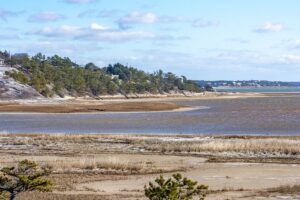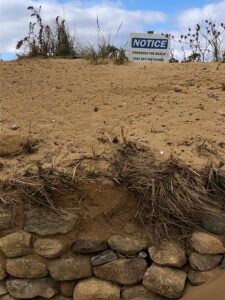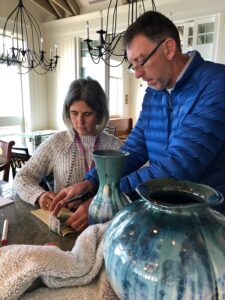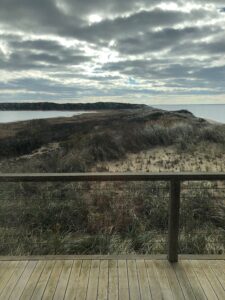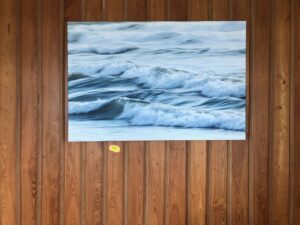WELLFLEET — The sight of more than a dozen boats on a residential property on Chequessett Neck Road has raised eyebrows around town. But whether they are being stored there legally depends on factors that the town has apparently not taken into consideration.
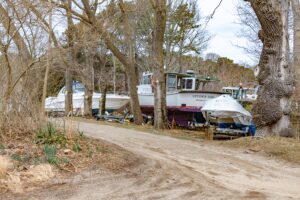
Alfred Pickard, a longtime member of the Wellfleet Planning Board, bought 150 Chequessett Neck Road, where the boats are stored, with Stephen and Jeffrey Pickard in February 2020, according to the deed. It includes one of the town’s oldest houses, built in 1766, and 2.5 acres of land once known as the Mayo Farm.
Pickard operates Wellfleet Marine Corp. at 45 Holbrook Ave., a business that encompasses two full-service boatyards and manages boat rentals and shops, according to its website. Pickard also stores boats on a residential property he owns at 5 Pinecrest Way in Wellfleet. A neighbor objected to commercial boat storage there in 2008, but the Pickards argued it was a grandfathered use. Boats continue to be stored there, and Pickard now has the required special permit to do that.
If Pickard is being paid to store any of the boats in his Chequesset Neck yard, he needs a special permit from the zoning board of appeals because the property is in a residential zone. There are no records related to a commercial boat storage operation at that address on file with the town.
Wellfleet’s regulations allow the storage of boats for private individual use by the owner, not for compensation, in all zones without a permit. There is no limit to the number of boats that may be stored. Because the family is involved in the fishing industry, it is possible that all 13 boats, ranging from lobster boats to smaller vessels, belong to Pickard’s relatives.
Pickard did not respond to several phone calls or an email message; attempts to find him at 150 Chequessett Neck Road and at his marine business were unsuccessful.
The land at 150 Chequessett Neck abuts a wetland, and, according to Conservation Agent Lecia McKenna, “The conservation commission regulates 100 feet from a wetland and 200 feet from a riverfront.” Some activities are permissible, she wrote in an email; allowed activities depend on the type of wetland and distance from the wetland. “It can be site specific,” she said.
McKenna added that there had been no complaints submitted to the commission about 150 Chequessett Neck Road, “so this office has no current information,” she wrote.
A state mapping tool places seven large boats on the property within 85 feet of the wetland. As of press time on Tuesday, McKenna had not responded to an email asking whether it would be the obligation of the property owner to seek an order of conditions from the commission for boat storage within the 100-foot buffer.
Town Planner Beth Pyles said in an email that there were no records related to the property in the health and conservation files. Jennifer Elsensohn, the zoning board secretary, said there was no record of a special permit, nor was there a folder for the site. Sharon Inger, chair of the zoning board, which is the special permit-granting authority for commercial boat storage in residential zones, said her panel had never taken up the boat storage issue.
The planning board, on which Pickard serves, proposes zoning bylaw changes for consideration at town meeting. Chair Gerry Parent said boat storage has not been a problem in town. Since fishing and shellfishing are widespread in Wellfleet, it’s not uncommon for fishermen to store one or more large boats on their properties, he added.
“We are not only a resort destination; we are a fishing village,” Parent said. “I know the Pickard family probably is sitting on a number of boats that they own.”
The Wellfleet Building Dept.’s file for 150 Chequessett Neck contains a couple of permit requests for the buildings on the site but nothing related to boat storage.
Normal procedure, Inger said, was that the building commissioner, as the zoning enforcement officer, would be the person to act in case of a violation.
The town, however, is once again without a permanent building commissioner. There have been six different commissioners in the last five years. Victor Staley, a retired longtime Cape Cod building inspector, is filling in part-time while Wellfleet searches for someone to fill the job. But Staley could not be reached. He has been out on vacation for the last two weeks and, according to building dept. staff, was not due back in the office until the beginning of April.
